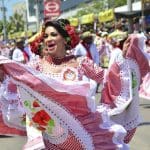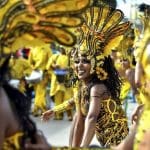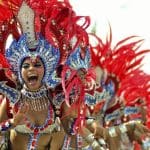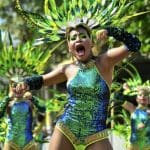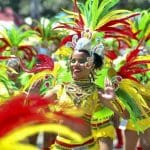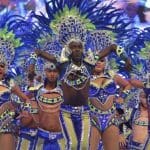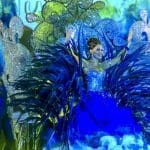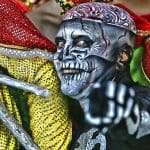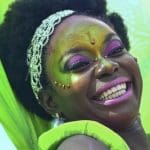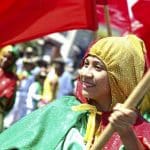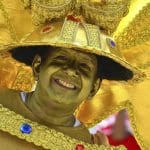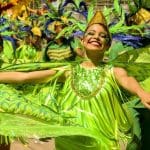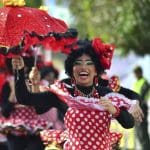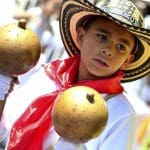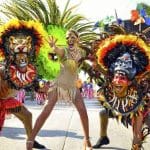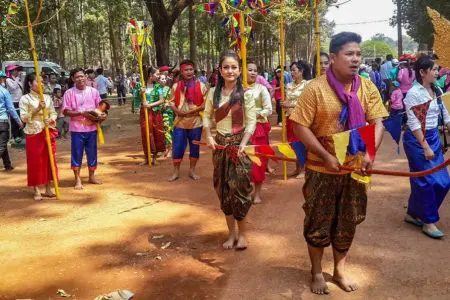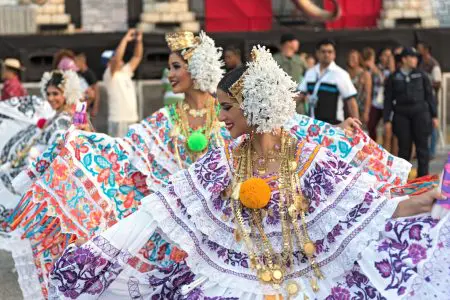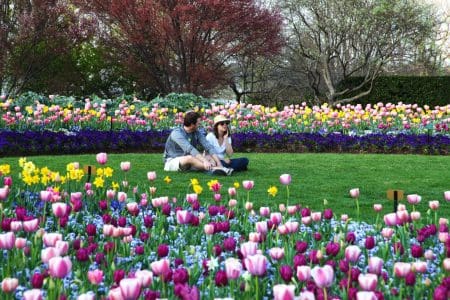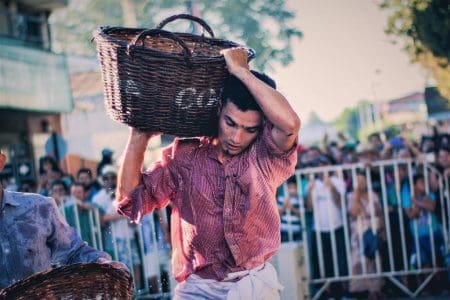
The Barranquilla Carnival Colombia (Carnaval de Barranquilla Colombia) is the world’s second biggest fiesta with magnificent street parades, traditional dancers, lots of local food and the South American country’s joyous cumbia music.
Colombia’s culture is most pronounced at its many regional festivals, but perhaps never as much as during its Carnaval Barranquilla, as it is known in Spanish. The world’s second biggest carnival, this authentic Caribbean fiesta is less commercial than its more famous counterpart in Rio de Janeiro but no less exuberant. Over the course of four days the Colombian port city of Barranquilla turns topsy-turvy with parties, music, dance and colour.
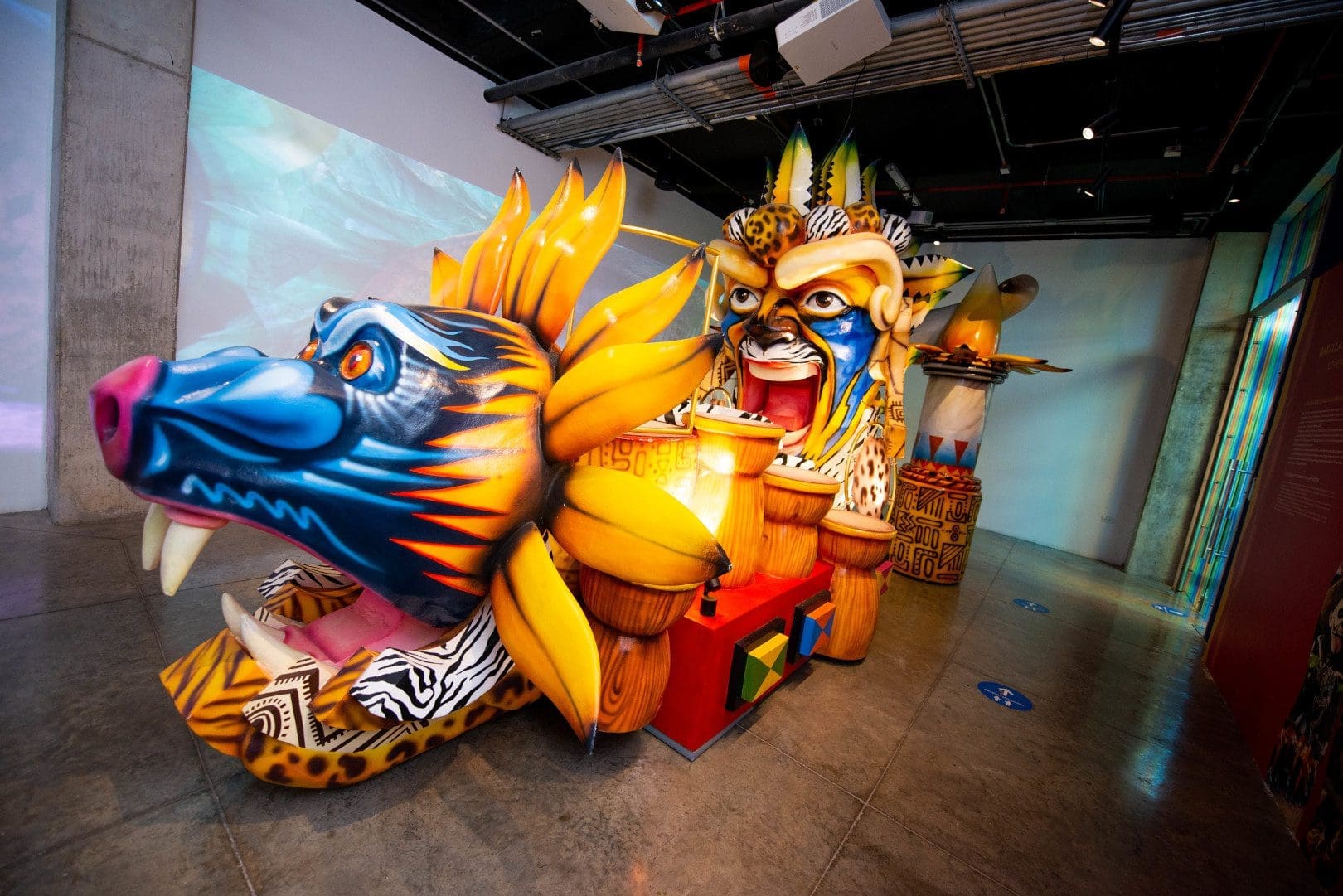
What Is the Barranquilla Carnival?
Half of the world’s inhabited continents are represented in the mix of cultures that form the carnival of Barranquilla. Even though officially it marks the Christian tradition of holding celebrations before the weeks of Lent, the Barranquilla Carnival has been heavily influenced by the music, dance and culture of the 18th-century African slaves and the indigenous people. This blend of Catholic beliefs, pagan ceremonies and Indian traditions forms the essence of the Carnival of Barranquilla, creating a colourful cultural fusion that enchants and attracts every year many thousands of regional and international visitors.
Interested in Carnivals? Go to our page of Carnivals around the world from Notting Hill to Rio and Nice to Rotterdam.
Because of its status as one of the country’s main folk celebrations, together with Colombia’s Feria de Cali, Unesco added the Carnaval de Barranquilla in 2003 to its list of Masterpieces of the Oral and Intangible Heritage of Humanity.
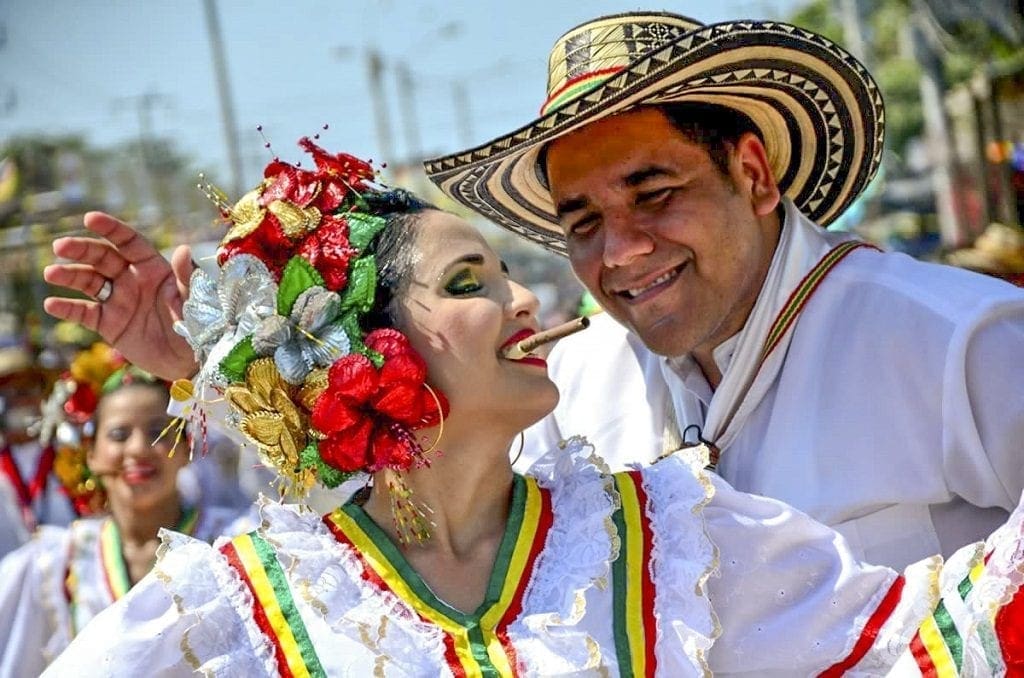
What to Expect at the Barranquilla Carnival 2026
Expect an explosion of colour with hundreds of folk groups in their dazzling costumes, international artists and live bands, loud Latin American music, the throwing of cornflour, and of course lots of rum and aguardiente or “firewater” at this leading Colombia carnival. As the Barranquilla Carnaval hasn’t been discovered yet by huge tourist crowds like at the Rio Carnival, you will be in for a more authentic experience where foreign visitors and welcoming locals mix and party together.
Make sure you are dressed up – the more colourful and extravagant the better – so you blend in with the local revellers. It’s a good idea to bring a hat, sunscreen and enough water to stay hydrated while, as always in big crowds, keeping an eye on your valuables.
To dress yourself up beautifully, you can use Custom Iron On Patches, on which you can customize symbols of local cultural elements or representative elements of the carnival. They can not only add a unique charm to your outfit but also inadvertently become a topic of conversation for you to communicate with local people.
Barranquilla Carnival Events

The Carnival of Barranquilla starts with the reading of the Bando.
The Barranquilla Carnaval agenda continues with the Festival Viva la Tradición that for three days will present the diversity of the Barranquilla Carnival that supports its status as a World Heritage Site with more than 800 folkloric groups that will perform for three continuous days in the Sagrado Corazón Park.
- Festival of Special and Relationship Dances
- Fiesta de Comparsas
- M Fiesta de Danzas y Cumbias.
The thousands of carnival-goers who gather during the four days of Carnival will also be able to enjoy the parades of the Great Parade of Tradition, Great Parade of Comparsas and Joselito Carnival on Sunday, Monday and Tuesday to bid farewell to the celebration. The oral tradition has its space on Monday and Tuesday of Carnival for Comedies and Litanies in representative city parks. Do not miss out on the Barranquilla Carnival parade.
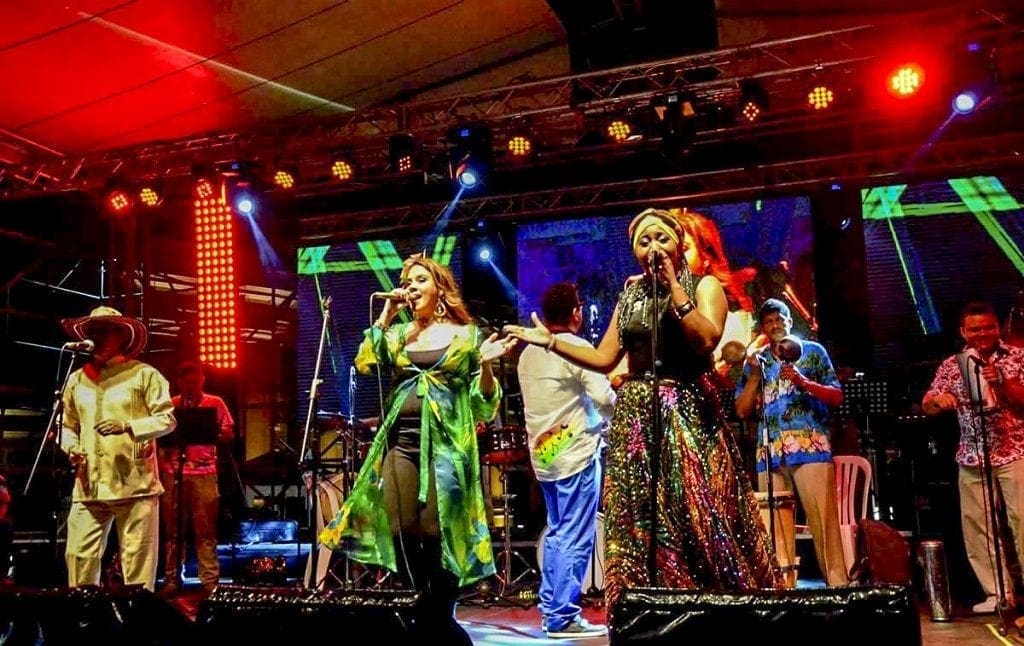
Cumbia and Marimonda at the Barranquilla Carnival
There are perhaps two most defining elements of the Colombian Carnaval de Barranquilla. One is the cumbia, a complex but elegant and rhythmical local music and dance style that mixes Spanish music with African slave music, and which has become one of Colombia’s and Latin America’s most popular music genres.
Cartagena, another Colombian port city, is not far from Barranquilla. Read Mike East’s Things to Do in Cartagena: from Dawn to Dusk.
The second one is the Marimonda character, the only carnival character that originated in Barranquilla and of which the local barranquilleros are very proud. He’s portrayed with a long nose, elephant ears and dressed in bright, conflicting colours. With his whimsical dances he represents the defiant and comical spirit of the barranquilleros.
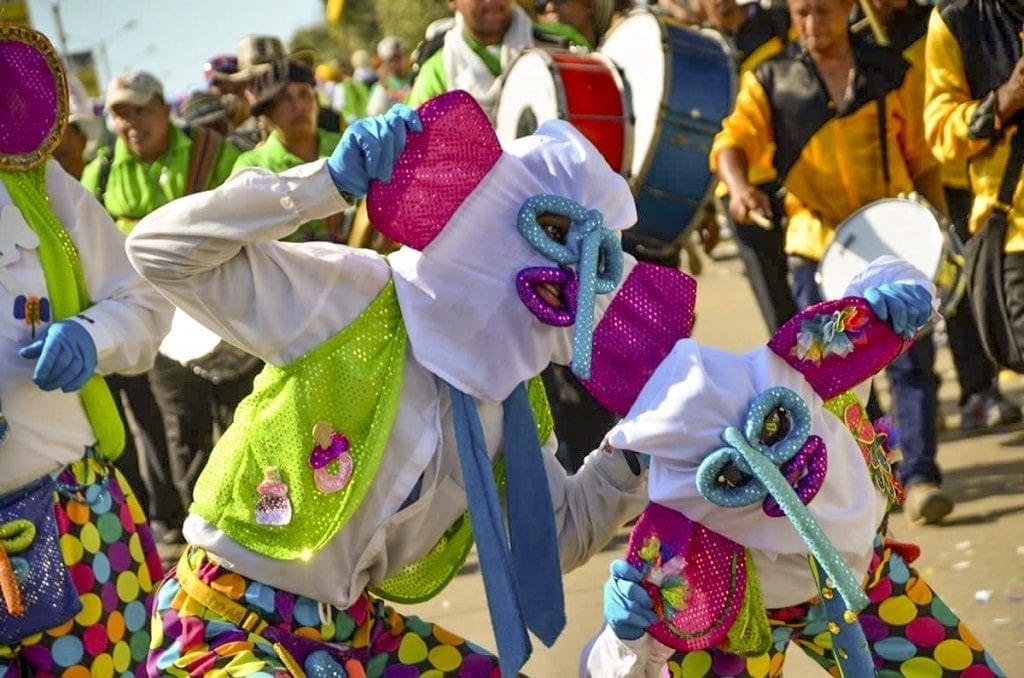
Barranquilla Carnival History
Although the origins of the Carnival Colombia are unknown, the most popular theory is that it’s a celebration of renewal and birth to welcome the spring season. It is believed that it exists since more than three centuries and that it once marked a holiday for the African slave communities.
The first important date in its history is the crowning of Carnival King Momo in 1888 who became the Carnival’s main character, while 1899 saw the appointment of the first Carnival President.
Many of the key carnival features were established at the start of the 20th century. These include the Carnival Queen (1918) and Battle of the Flowers (1903). The Great Parade was introduced in 1967 while 1969 saw the addition of the orchestra and music competitions. In 2002 the Colombian government gave the Barranquilla Carnival the status of National Cultural Heritage while a year later Unesco followed suit.
When is Barranquilla Carnival 2026?
When is carnival in Colombia? The Carnival Barranquilla takes place in the four days leading up to Lent, so from 14 to 17 February 2026.
Barranquilla Festival Programme
The highlights of the leading Colombia carnival includes:
Barranquilla Carnival Saturday
Batalla de Flores – Battle of flowers; King Momo Parade; Dance on the street (Baila a la calle).
Barranquilla Carnival Sunday
Gran parada de tradición y folcror (grand parade of tradition and folklore). Great Barranquilla Carnival parade of the safeguarding and the Carlos Franco tradition; Baila a la Calle / Night of Orchestras; Festival of letanías (litanies).
Barranquilla Carnival Monday
Gran Parada de comparsas; Safeguard Parade.
Barranquilla Carnival Tuesday
Joselito’s Burial – 84th Street:
The carnival’s grand finale arrives with the Burial of Joselito, a moving and deeply rooted tradition held along Calle 84. In this symbolic parade, costumed widows weep as they bid farewell to Joselito, marking the end of the festivities with flair and emotion. Colourful comparsas (parade groups) light up the streets, blending humour, drama and tradition. Organised by the Fundación de Arte y Folclor del Atlántico, this is one of the most unforgettable and recommended events—capturing the true spirit of the carnival right to its final moment.
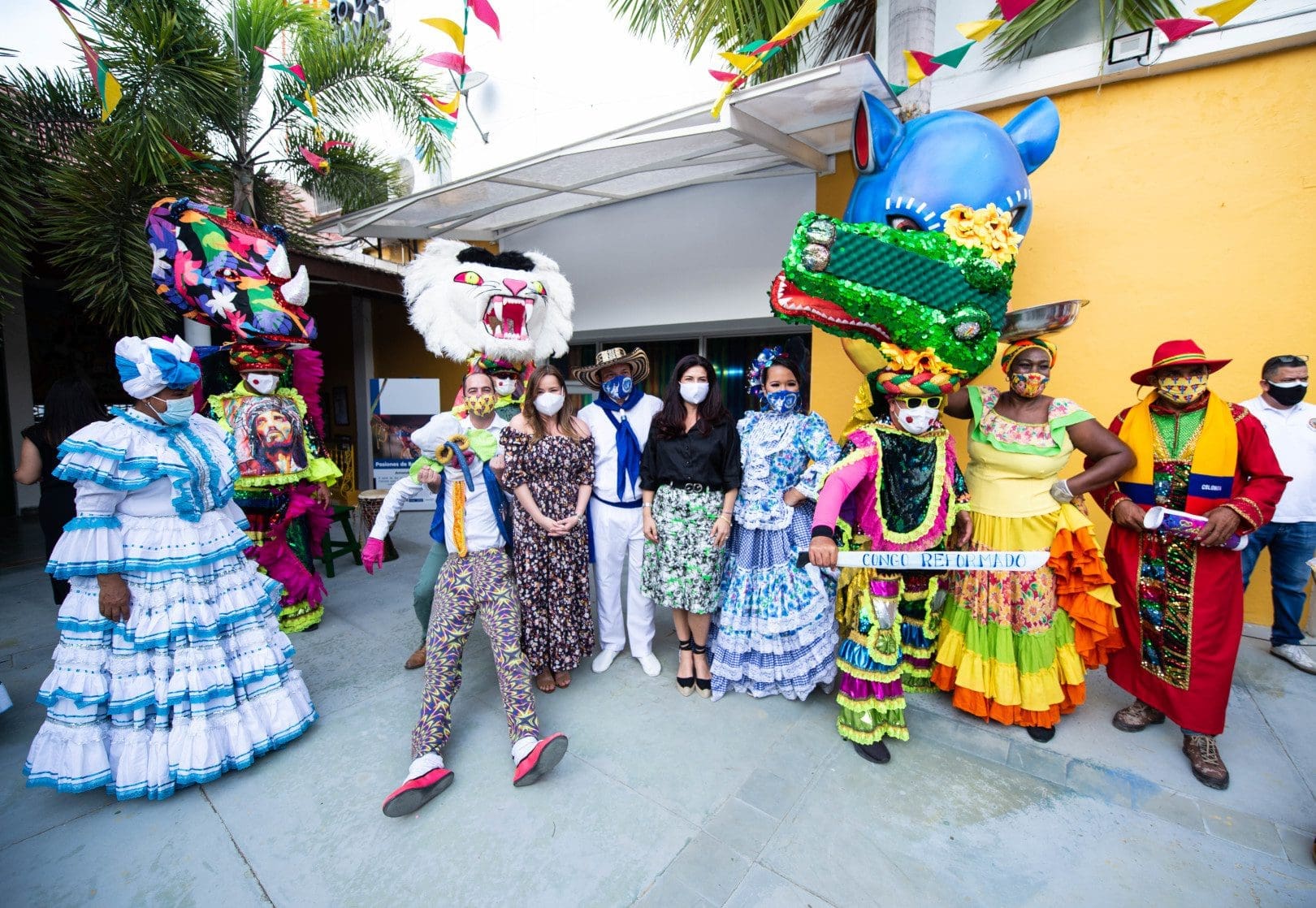
Barranquilla Carnival Location?
Most of the city shuts down during the four days of the Carnival. The Barranquilla Carnival location and main venues are: Via 40, where the Battle of the Flowers, the Great Parade and the Great Fantasy Parade begin at 1pm; 17 Road for the King Momo Barranquilla Carnival Parade; 44 Road for the La Guacherna night parade; and Romelio Martinez Stadium for the Orchestras Festival and the crowning of the Carnival Queen.
Verbenas are open spaces with free access for dancing, eating and other festivities. The most popular include: A Pleno Sol in the La Unión barrio or neighbourhood, El Bambú in the Olaya barrio and Polvorín in the San José barrio.
Most of the parades are free but for better and more comfortable viewing it’s recommended to buy a ticket to sit in the shaded box seats (“palcos”) area. Ask your hotel to help you buy a ticket.
Carnaval de Barranquilla photo gallery
Where to stay during the Barranquilla Carnival
Make sure you book well in advance for this event.
For more information and updates about the Barranquilla Carnival 2026
Browse the Carnival’s Spanish-only official website. If your Spanish is rusty or quite dead, there’s still a lot of information to be picked up in its Google-translated English version with a bit of skill.
For more information and ideas on Colombia travel, visit the official Colombia tourism website.
All images courtesy of the Carnaval de Barranquilla and ProColombia unless mentioned otherwise. #ViveYGozaPorDos. Official Carnival Networks: Twitter: @Carnaval_SA, Facebook: Carnival of Barranquilla S.A.S., Instagram: @Carnavalbaq
